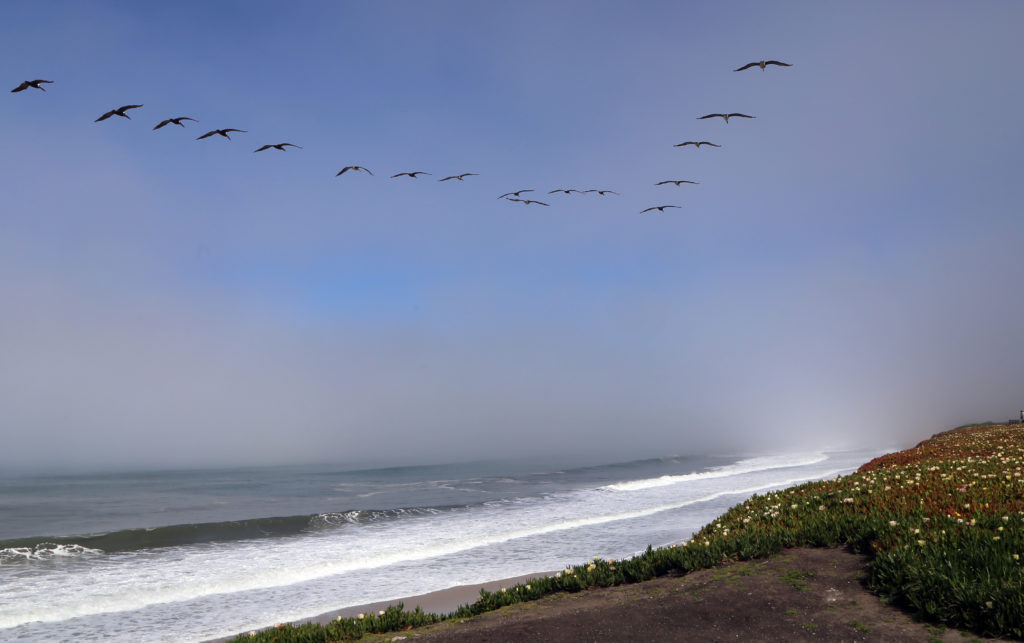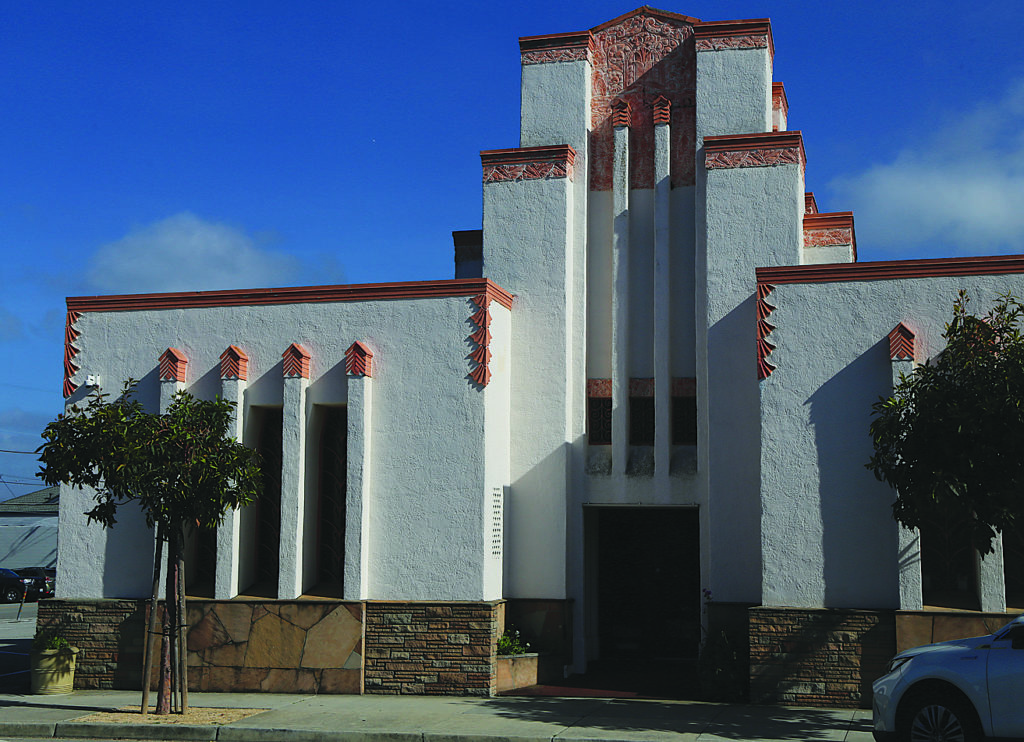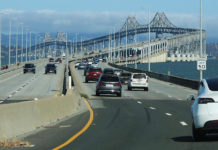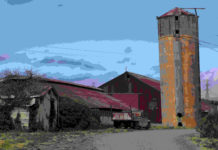
I left off in the first half of this story about our overnighter last month in Half Moon Bay as we wrapped up breakfast at the Half Moon Bay Lodge and headed off for a glimpse of the town.
First up was a visit to a pullout where visitors can check out the historic 1853 Salt Box House, sometimes referred to as the “White House of Half Moon Bay” and officially called the James Johnston House.
Pristine and majestic on its hillside overlooking Highway 1 south of town, the odd-shaped building is listed on the National Register of Historic Places, and now serves as a museum and community event spot.
According to the website visithalfmoonbay.org, the house is recognized for its unique New England–style “saltbox” design, a rarity in the predominantly Mexican community of Spanishtown.
It was the first wood-framed house along the San Mateo County coast, built with hand-hewn redwood timbers, mortise and tenon construction, and wooden pegs.
It is part of the history of dairy farming on the California coast, since Johnston and his three brothers introduced dairy farming to the area, eventually expanding their ranch to encompass half of the original Rancho Miramontes.

They imported 800 dairy cattle from Ohio, which had a profound impact on local agriculture.
Back in the early ’80s, Sarah and I commonly rolled through Half Moon Bay on our way to Burlingame to visit her folks. Since these trips were usually for Thanksgiving or Christmas visits, we’d relish the bounty of Half Moon Bay dressing itself up for those events with colorful Christmass tree farms, pumpkin patches and a dramatic corn maze. The place has become a legend for 51 years of the annual Safeway World Championship Pumpkin Weigh-Off, which typically makes its way into news headlines, especially when a winner one year topped out at 2,471 pounds.
A stroll along Main Street offers a payload of old and interesting buildings, longstanding markets and inns, small plazas sprinkled with benches, and a relaxed and pedestrian-friendly air.

Sarah’s father used to give historical walking tours around Burlingame, San Mateo and surroundings. At one point he came upon a box of early-day photographic negatives by R. Guy Smith, who moved to nearby Moss Beach in the early 1900s and became a widely known postmaster. His photos show Highway 1 with early-day cars, old markets, people partying on the beach and so on. When I had a photo darkroom in my garage several years ago, I printed several of his images and they certainly set a mood for earlier times.
For the 90-minute drive, from Watsonville to Half Moon Bay, the journey offered a rich mix of natural settings, historic buildings, varied agricultural landscape and a relaxing drive along the dramatic coast.












